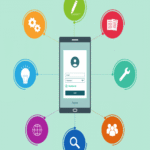If you want to describe the day-to-day life of a design project manager in less than 30 seconds, watch the Friends episode where Ross carries his new couch upstairs. You know what it’s like: ” Pivot! Pivot! Pivotoooooooot!”
It’s a bit dramatic. But effective design project management requires a high level of flexibility—in addition to a detailed request process, clear timelines, and open collaboration from start to finish. That’s because a good project package is often the deciding factor in the success or failure of a design project.
But creating your own package is no easy task: managing a design project is one of the most challenging to implement, as it requires a near-constant flow of knowledge and experience, cross-functional collaboration between clients, other departments, team members, or all of these at once.
Plus, your design requests will rarely be in the same department or project scope . One day you’re creating a logo, and the next day you’re designing an entire website! It touches on almost every aspect of a business, and we’re here to help you navigate it.
What is design project management?
Design project management is the process of managing design projects, creating and delegating tasks, overseeing resources, and completing a project.
From there, the request is often integrated into a project management system specification to guide the next stages of projects, and this is where the European Commission creative project management comes into play.
The goal isn’t just to solidify graphic design workflows or keep the team on track —the primary goal of good design project management is to bridge the communication gap between
Adding annotations or assigning comments on design files streamlines communication and collaboration with your internal team, clients, or agency partners
Additionally, many design requests require more than one deliverable per project, resulting in multiple rounds of feedback and ongoing teamwork to deliver assets in line with the requester’s expectations. A good example is an advertising or marketing campaign consisting of multiple graphic elements from creative teams, each responsible for a different deliverable.
In this case, the design project manager must oversee multiple timelines, workflows, and approvals to ensure that the entire project meets the requester’s expectations and is completed without unforeseen delays.
Why is project management important?
Things can get complicated quickly because every request is unique. Many project management processes typically follow a day-to-day, paperless structure—with a few minor adjustments.
But in the creative world, you’re likely juggling a handful of small design projects to meet a single request, or regularly changing your approach to meet the needs of clients in different industries.
In this case, it’s almost best to think of your design project management plan like the bumpers on a bowling alley—it keeps the entire team on track while leaving plenty of room for exploration along the way. 🎳
A proper project management process reassures your client by laying the foundation for an open and honest working relationship. It allows them to think critically about what they are asking for, how to provide constructive feedback, and how to communicate the concepts they have already envisioned for the project.










